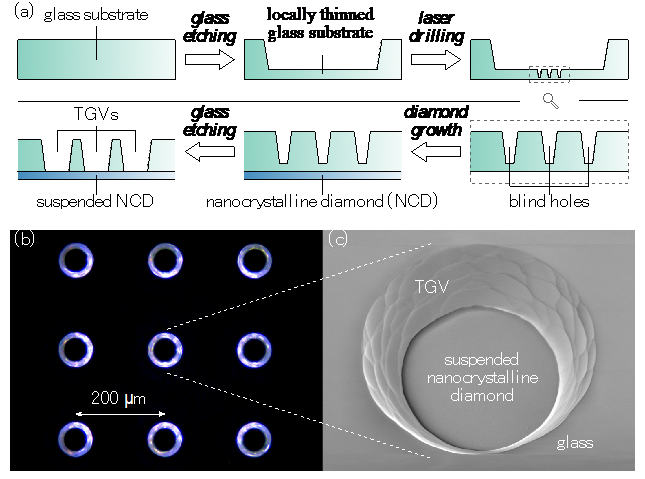Printing and Photolithography-Free Fabrication of Sealed TGV (No. 0155)
|
|
|
<< Back to all technologies |
Summary
A novel sealed through-glass-via (TGV) platform for electronic and biological devices.
The global glass substrate market was valued at USD 1.39 billion in the year 2021 and is expected to have steady growth in the coming years. The advancements in electronics and increased use of electronics drive the glass substrate market. Thin glass plates with through holes, named Through Glass Vias (TGVs), have been recently available from major glass manufacturers and are intended for microdevice fabrication. However, with current technology, only glass slabs with unsealed TGVs are available. Sealing these TGVs for specific applications causes problems of too many processing steps, sacrificial material waste and limited processing options. Here we present a promising glass TGV platform developed by a group of researchers led by Prof. Elliot Fried which overcomes the above problems.
Applications
- Accelerometer
- Microscopic detection
- Single cell culture
Advantages
- High biological inertness
- High chemical inertness
- High temperature resistance
Technology
The technology is based on a novel glass platform free from transfer printing and photolithography to fabricate TGVs that are sealed with suspended portions of a nanocrystalline diamond (NCD) layer. Steps to fabricate this sealed TGV are as follows: 1.) a glass substrate is locally thinned by hydrofluoric acid, 2.) blind holes are made by laser ablation, 3.) an NCD film is deposited at the back side, and 4.) hydrofluoric acid etching is done locally to form TGVs. These steps produce a sealed TGV platform that has high biological and chemical inertness, and temperature resistance of at least 400 deg C.
Media Coverage and Presentations
![]() JST Technology Showcase Presentation (JP/EN)
JST Technology Showcase Presentation (JP/EN)
![]() JST Technology Showcase Presentation Slides (JP/EN)
JST Technology Showcase Presentation Slides (JP/EN)
CONTACT FOR MORE INFORMATION
![]() Graham Garner
Graham Garner
Technology Licensing Section
![]() tls@oist.jp
tls@oist.jp
![]() +81(0)98-966-8937
+81(0)98-966-8937






